Pan-cancer analysis reveals that TK1 promotes tumor progression by mediating cell proliferation and Th2 cell polarization
- PMID: 39343871
- PMCID: PMC11440694
- DOI: 10.1186/s12935-024-03515-x
Pan-cancer analysis reveals that TK1 promotes tumor progression by mediating cell proliferation and Th2 cell polarization
Abstract
Background: TK1 (Thymidine kinase 1) is a member of the thymidine kinase family and has been observed to be significantly upregulated in a variety of cancer types. However, the exact roles of TK1 in tumor progression and the tumor immune microenvironment are not fully understood. This study aims to investigate the comprehensive involvement of TK1 in pan-cancer through the utilization of bioinformatics analysis, validation of pathological tissue samples, and in vitro experimental investigations.
Methods: The expression profiles together with diagnostic and prognostic role of TK1 in pan-cancer were investigated though TCGA, TARGET, GTEx, and CPTAC databases. The single-sample gene set enrichment analysis (ssGSEA) and single-cell sequencing datasets were used to examine the relationship between TK1 and immune infiltration. The expression of TK1 were verified in hepatocellular carcinoma (HCC) through qPCR, western blotting and immunohistochemical assays. The proliferative capacity of HCC cell lines was assessed through CCK-8 and colony formation assays, while cytokine levels were measured via ELISA. Furthermore, flow cytometry was utilized to analyze cell cycle distribution and the proportions of Th2 cells.
Results: TK1 was overexpressed in most cancers and demonstrated significant diagnostic and prognostic value. Among the various immune cells in pan-cancer, Th2 cells exhibited the closest association with TK1. Furthermore, the single-cell atlas provided insights into the distribution and proportion of TK1 in immune cells of HCC. In vitro experiments revealed an elevated expression of TK1 in HCC tissue and cell lines, and its role in influencing HCC cell proliferation by regulating G0/G1 phase arrest. Additionally, TK1 in cancer cells was found to potentially modulate Th2 cell polarization through the chemokine CCL5.
Conclusion: TK1 holds immense potential as a biomarker for pan-cancer diagnosis and prognosis. Additionally, targeting the expression of TK1 represents a promising therapeutic approach that can enhance the efficacy of current anti-tumor immunotherapy by modulating Th2 cell polarization and multiple mechanisms.
Keywords: Hepatocellular carcinoma; Pan-cancer; TK1; Th2 CD4+ T cells; Tumor immune microenvironment.
© 2024. The Author(s).
Conflict of interest statement
The authors declare no competing interests.
Figures
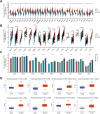
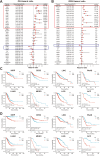
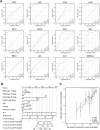
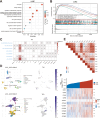
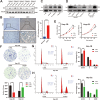
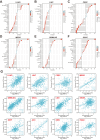


Similar articles
-
Comprehensive Analysis of Immune-Related Prognosis of TK1 in Hepatocellular Carcinoma.Front Oncol. 2022 Jan 21;11:786873. doi: 10.3389/fonc.2021.786873. eCollection 2021. Front Oncol. 2022. PMID: 35127491 Free PMC article.
-
Comprehensive Pan-Cancer Genomic Analysis Reveals PHF19 as a Carcinogenic Indicator Related to Immune Infiltration and Prognosis of Hepatocellular Carcinoma.Front Immunol. 2022 Jan 5;12:781087. doi: 10.3389/fimmu.2021.781087. eCollection 2021. Front Immunol. 2022. PMID: 35069553 Free PMC article. Clinical Trial.
-
Regulatory T cells are associated with the tumor immune microenvironment and immunotherapy response in triple-negative breast cancer.Front Immunol. 2023 Sep 12;14:1263537. doi: 10.3389/fimmu.2023.1263537. eCollection 2023. Front Immunol. 2023. PMID: 37767092 Free PMC article.
-
A comprehensively prognostic and immunological analysis of actin-related protein 2/3 complex subunit 5 in pan-cancer and identification in hepatocellular carcinoma.Front Immunol. 2022 Sep 6;13:944898. doi: 10.3389/fimmu.2022.944898. eCollection 2022. Front Immunol. 2022. PMID: 36148220 Free PMC article.
-
Pan-Cancer Analysis Reveals Disulfidoptosis-Associated Genes as Promising Immunotherapeutic Targets: Insights Gained from Bulk Omics and Single-Cell Sequencing Validation.Biomedicines. 2024 Jan 24;12(2):267. doi: 10.3390/biomedicines12020267. Biomedicines. 2024. PMID: 38397869 Free PMC article.
Cited by
-
ECM characterization and 3D bioprinted models of NSCLC for investigating stiffness-dependent tumor behavior and drug response.Mater Today Bio. 2025 Apr 30;32:101823. doi: 10.1016/j.mtbio.2025.101823. eCollection 2025 Jun. Mater Today Bio. 2025. PMID: 40416783 Free PMC article.
-
SPDL1 overexpression was associated with poor prognosis and immune status in HCC through in vitro experiment and bioinformatics analysis.Discov Oncol. 2025 Jul 11;16(1):1310. doi: 10.1007/s12672-025-03089-8. Discov Oncol. 2025. PMID: 40643715 Free PMC article.
-
Identification of BIRC5 and HMMR as prognostic biomarkers for immune infiltration in prostate cancer.Transl Androl Urol. 2024 Nov 30;13(11):2482-2497. doi: 10.21037/tau-24-359. Epub 2024 Nov 28. Transl Androl Urol. 2024. PMID: 39698582 Free PMC article.
References
-
- Merlo LM, Pepper JW, Reid BJ, Maley CC. Cancer as an evolutionary and ecological process. Nat Rev Cancer. 2006;6(12):924–35. - PubMed
-
- Joyce JA, Fearon DT. T cell exclusion, immune privilege, and the tumor microenvironment. Science. 2015;348(6230):74–80. - PubMed
-
- Ott PA, Hodi FS, Robert C. CTLA-4 and PD-1/PD-L1 blockade: new immunotherapeutic modalities with durable clinical benefit in melanoma patients. Clin Cancer Res. 2013;19(19):5300–9. - PubMed
Grants and funding
LinkOut - more resources
Full Text Sources
Research Materials
Miscellaneous

